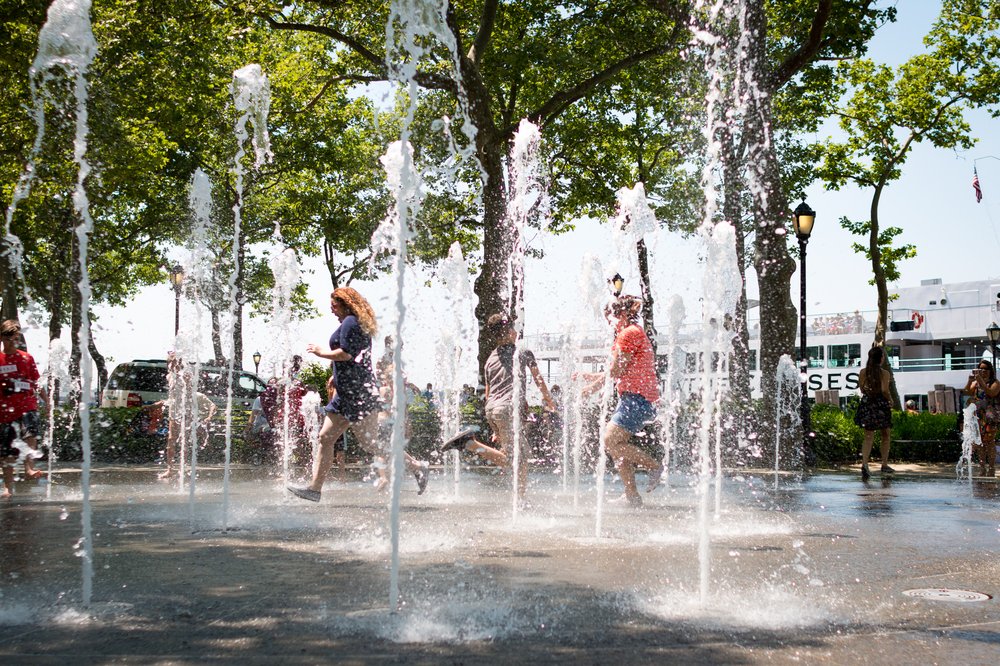Heat-related deaths in New York City soar in the last decade, report says
July 6, 2023, 4:46 p.m.
Hotter summers are to blame, with Black residents and those in high-poverty areas getting the worst of it.

Annual heat-related deaths in New York City have climbed over the past decade, right along with roiling summer temperatures, according to a report released on Thursday by the Department of Health and Mental Hygiene.
An estimated 350 people each year – about 2% of all deaths in the city between May and September – die prematurely from heat-related causes.
The vast majority of these people don't have heat listed on their death certificate but instead have an underlying illness – such as heart disease, for example – that's exacerbated by hot weather. After plateauing at about 100 annual deaths in the 2000s, the death toll has been on the rise in recent years and has surged into the 300s, according to a graph of the findings.
Another estimated seven people annually die directly of heat stroke, according to death certificate data, with the highest death rates among those older than 60, men, Black people and residents of high-poverty neighborhoods. Black New Yorkers are more than twice as likely to die from heat stroke as white New Yorkers, according to the report.
"This inequity is due to past and current structural racism that creates economic, health care, housing, energy and other systems that benefit white people and disadvantage people of color,” the report said.
But the city’s hottest days aren’t the main culprit for the rising heat-related death toll. Instead, it’s the ordinary hot days below the extremes that are causing the most damage and claiming an increasing number of lives.
The number of heat-related deaths during extreme heat has remained relatively constant in the past decade, hovering around about 100 annually. Those are days for which the National Weather Service issues a heat advisory, with the threshold being a maximum temperature above 100 degrees for a single day or 95 degrees for two days. And the figure pertains to the "indirect" deaths where heat isn't listed as a cause of death.
Meanwhile, when taking into account hot days featuring highs of 82 degrees or above, the annual death count surged to an average of 345 in the five-year-period starting in 2016.
The number of heat-related deaths seemed to plateau in the 2000s, after showing a substantial decline since the 1970s. That's as fewer additional New Yorkers were getting air conditioning, following a major spike from 40% of households with air conditioning in 1970 to over 80% by the mid-2000s, according to annual survey data compiled by the researchers.
Most victims of heat stroke died in homes without air conditioning. While more than 90% of New York City households today have air conditioning, that percentage varies depending on socioeconomic status. In lower-income neighborhoods, that figure can be as low as 76% of households.
"To prepare for a hotter future and prevent heat-related deaths, the city needs long-lasting structural interventions alongside emergency preparedness and response," the report said. The authors suggested various policies to boost access to air conditioning and increase cooling infrastructure, like tree cover, in high-risk neighborhoods.
Meanwhile, the number of hot days continues to grow. The average daily maximum temperature in New York City in July – the month with the highest number of heat-related deaths – has increased by about 5 degrees in the past five decades, to 88 degrees.
In the five year-period between 1971 and 1975, there were an average of four extreme heat days per year in New York City. Between 2016 and 2020, that number rose to 11. Meanwhile, over the same time span, the average number of other less-severe hot days climbed from 52 to 74.
Cooling centers feel the chill as NYC swelters in summertime heat wave Asthma ER visits during NYC smoke haze were highest in high-poverty, Black and Latino areas Is NYC ready for summer heat? An environmental watchdog doesn’t think so.